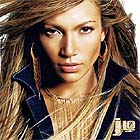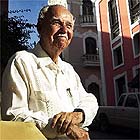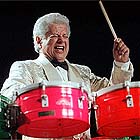|
 |
|
Esta página no está disponible en español. Island, Urban Tradition Make Entertaining Mix…Puerto Rican Arts Primer
Island, Urban Tradition Make Entertaining Mix By Deborah Ramirez July 21, 2002
Actress, dancer, singer. (PRENSA ASOCIADA ) ---------- FORT LAUDERDALE - A concert in New Jersey by Caribbean minstrels who sing a medieval form of improvisational verse. A two-day festival in South Florida featuring films made in Puerto Rico. Once concentrated in New York, Puerto Ricans have spread out to other areas of the country. Nearly as many Puerto Ricans (3.4 million) live in the United States as in Puerto Rico (3.9 million). And they’ve taken with them a 500-year-old culture, a distinct combination of European, Indian and African traditions and folklore. Add American culture to the mix. Continental Puerto Rican writers and artists are blending island traditions with U.S. urban experiences in their work. "We love Sears, but we won’t give up other aspects of our culture," said Pepón Osorio, a sculptor and installation artist who lives in Philadelphia and combines Puerto Rican folklore and barrio themes in his work. "It’s an example of our ambiguity, we’re neither here nor there, like the Commonwealth of Puerto Rico." In the past, mostly the island’s poor flocked to New York’s ghettos and factories, in search of work and a better life. Discrimination and the pressure to assimilate were enormous, and migrants looked toward Puerto Rico with nostalgia for their identity. With time, Puerto Rican communities organized festivals and parades. New York’s Palladium nightclub became the showcase for Latin Big Bands, including Tito Puente. In the 1950s, Puerto Ricans helped crown the Cuban Mambo an American king.
Cultural bond. (EL SENTINEL ARCHIVE PHOTOS ) ---------- In South Florida, a number of groups that promote Puerto Rican culture have become active in recent years, as people moved here from the island. Three years ago the Puerto Rican Cultural Center of South Florida joined the Puerto Rican Institute of Culture, a San Juan agency that sponsors cultural events. Since then the local group has promoted programs throughout South Florida, including a film festival, music and dance workshops and an annual cultural festival. "Our objective is to educate the Puerto Rican community, but also the non-Puerto Rican community because there is a lot of stereotyping that comes from ignorance," said José Luis Rodríguez, the Center’s co-founder, who lives in Coral Springs. Circulo Cultural Boricua, another civic group, last year organized a conference on the abolition of slavery, a Puerto Rican holiday celebrated on March 23 that also marks the birth of the island’s independence movement in the 19th century. "We’re still struggling to define our identity," said Circulo’s president Ricardo Hernández, who lives in Hollywood. But unlike the past, Puerto Rican cultural vibes today resonate in both directions between the island and the mainland. Last month, 20 Puerto Rican trovadores gave concerts and workshops in New Jersey. These performers of Puerto Rican country music improvise songs in a strict form of 10 ten rhyming couplets, known as the décima. The style evolved from 16th century Southern Spain and was the slam poetry of its day. ---------- Band leader. (EL SENTINEL ARCHIVE PHOTOS ) ---------- As the trovadores were preparing for their U.S. trip, the Nuyorican Poet’s Café took their modern urban poetry to the University of Puerto Rico and the island of Vieques, the site of numerous protests over a U.S. Navy bombing range. Their name itself is a play on the words New York and Puerto Rican, reflecting the languages they work in – English or "Spanglish," a combination of the two languages. But Mainland writers like Piri Thomas or Miguel Piñero, a founder of Nuyorican Poet’s Café who is now deceased, were considered cultural hybrids on the island, and as such, weren’t always welcome in Puerto Rico’s intellectual circles. Both wrote in English about their experience in American society. Down These Mean Streets, Thomas’ 1967 memoir about growing up in Spanish Harlem, is considered a classic that painfully describes the alienation many Puerto Ricans felt after moving from the island to the mainland. "There was a time when Puerto Rico didn’t recognize us because we don’t speak the language or write in Spanish," said Pedro Pietri, a founding poet’s café member. "That doesn’t happen anymore. We’re all part of one family." The family was reunited with the publication in Spanish of Esmeralda Santiago’s When I was Puerto Rican. The 1993 memoir, first published in English, traces Santiago’s journey from a poor San Juan neighborhood to a New York ghetto, and eventually to Harvard University. The Spanish edition became a bestseller in Puerto Rico. "It’s important to remind younger generations where they come from," said the author, speaking from her home in Westchester, New York. "But culture changes because of where it happens and from one’s daily experiences." No one more exemplifies the cultural changes between island and mainland better than writer Rosario Ferré, the daughter of Puerto Rico’s first pro-statehood governor, Luis A. Ferré. Before writing her first novel in English, The House on the Lagoon, Ferré was barely known outside Puerto Rico. That changed when it became a finalist for the 1995 National Book Award. Today, Ferré continues to write in two languages, a decision that reflects a change in her thinking about Puerto Rico’s political status. Like most of Puerto Rico’s literary community, Ferré had long supported independence for the island. But in 1998, she shocked her colleagues with an op-ed piece in the New York Times about her decision to vote for statehood in that year’s status plebiscite in Puerto Rico. "I feel American, but I am also Puerto Rican," said Ferré, who has lived in Washington, D.C., and now resides in San Juan. "With the Latin population explosion, the U.S. can evolve into a bilingual nation with Spanish as a second language. In that case, it would not be painful for Puerto Rico to become a state." Many Puerto Ricans see themselves successfully navigating two worlds. Gerardo Oyola, who was born and reared in Puerto Rico, paints rural Puerto Rican themes, such as jíbaros (peasants) cuatros (guitars) and pavas (sugar-cane workers’ straw hats), in a cubist style that he learned at the Maryland Institute of Art. "It’s not like we’re the new neighbors," said Oyola, who now lives in Miami. "We’ve been part of this country for 100 years. Now our culture is becoming their culture."
Puerto Rican Island And Mainland Arts Primer By Deborah Ramirez July 21, 2002 Puerto Rican culture is a Caribbean melting pot of Spanish, African and Taino Indian traditions that have brewed for more than five centuries. This hot mix began in 1493 when Christopher Columbus discovered Borinquen, the Taino name for Puerto Rico, on his second voyage to the New World. To this day, Spanish influence is deeply imbedded in Puerto Rican folklore and art – Spanish is the island’s primary language. Yet African slaves and Taino Indians played a significant role in shaping a cultural heritage through music, food, dance and folk art. What follows is a primer on Puerto Rican arts and culture on the island as well as the mainland. Fine Arts: Painters José Campeche, 1752-1809. "Virgen de la Soledad de la Victoria," or the "Virgin of the Solitary Victory," is displayed at the Museo de Arte de Puerto Rico in Santurce. Francisco Oller, 1833-1917. "El Velorio," or the Wake, hangs at the University of Puerto Rico Museum in Río Piedras. Rafael Tufiño, 1922. "Goyita" is in the collection of the Museo de Arte del Instituto de Cultura Puertorriqueña in Old San Juan. Antonio Martorell, 1939; Myrna Báez, 1931; and Francisco Rodón, 1934, are among contemporary artists whose work can be found in museums, galleries and private collections in Puerto Rico and the United States. Sculptors and Installation Artists John Balosi, 1931. Pepón Osorio, 1955. Folk Art Vejigante masks: The most popular mask style, they are usually of bright colors, made of papier-mâché with horns and fangs. They are used for decoration or worn in carnivals. Santos tallados: Hand-carved wood statues of saints or religious figures. Mundillo: Bobbin lace whose manufacture goes back five centuries and is unique to Puerto Rico and Spain. Puerto Rican arts and crafts range from knick-knacks to sophisticated jewelry, woodcarvings, silkscreen prints and ceramics. Literature: Poets Julia de Burgos, 1914-1953. Feminism and nationalism are two favorite themes. Her best known work is "Rio Grande de Loiza," a poem about her hometown river. Luis Palés Matos, 1898-1959. Internationally renowned for poesia negroide, Afro-Antillean poetry, his masterpiece is "Tuntún de Pasa y Grifería," or "Tom Tom of Kinky Hair and Black Things," a book of Afro-Caribbean poetry. Novelists Enrique Laguerre, 1906. "La Llamarada," or "the Blaze." Laguerre was nominated for the Nobel Prize in Literature. Rosario Ferré, 1938. "The House on the Lagoon," a National Book Award nominee. Ana Lydia Vega, 1946. "Falsas Cronicas del Sur," or "False Chronicles from the South." Luis Rafael Sánchez, 1936. "La Guaracha del Macho Camacho," or "Macho Camacho’s Beat." Piri Thomas, 1928. Down These Mean Streets. Esmeralda Santiago, 1948. When I Was Puerto Rican. Judith Ortiz Coffer, 1952. The Line of the Sun. Playwrights René Marqués, 1919-1979. "La Carreta," or "The Oxcart." Miguel Piñero, 1946-1988. Short Eyes. Short Story Writers José Luis González, 1926-1996. "En el Fondo del Caño Hay un Negrito," or "At the Bottom of the Channel, There’s a Little Black Boy." Performing Arts: Music "Décima:" Jíbaro or country music with 16th century Andalusian roots, sung by a trovador who improvises 10 rhyming couplets of eight syllables each. Musicians playing the cuatro, a small guitar, and percussion instruments accompany the lead singer. Danza: Popular in the late 19th Century among the aristocracy, danza combines the waltz with Afro-Caribbean rhythms. Juan Morel Campos, 1857-1896, is the most famous danza composer and many of his works are still popular, among them "Margarita". La bomba: A sensual bonding between drummers and dancers, first performed on sugar plantations; mostly danced today by folkloric ballet groups. La plena: A rhythmic folkloric dance tune, popular in the 1920s in southern coastal working-class communities. Almost extinct, plenas have made a comeback in recent years, with groups such as "Plena Libre" and "Los Pleneros de la 23 Abajo." Other musical traditions: Casals Festival: Spanish cellist Pablo Casals, 1876-1973, began this internationally renowned festival of classical music in 1957, after settling in Puerto Rico, his mother's birthplace. Popular Music: Rafael Hernández, 1892-1965. The most beloved composer of popular Puerto Rican music of the 1940s and 1950s, including Cumbanchero and Lamento Borincano. Noel Estrada, 1918-1979. Composed ballads, including "En Mi Viejo San Juan," or "In My Old San Juan." Tito Puente, 1923-2000. A timbalero, or percussionist, whose big band sound popularized salsa. Ricky Martin and Marc Anthony, 1968. By blending Puerto Rican rhythms with lyrics in English, Martin and Anthony are introducing Puerto Rican-Caribbean music to a new audience. Theater and film: Actors José Ferrer, 1909-1992. Raúl Juliá, 1944-1994. Rita Moreno, 1931. Jennifer López, 1970. Benicio del Toro, 1967. Chita Rivera, 1933. Miriam Colón, 1945. Film actress and founder of the "Teatro Rodante de Puerto Rico," based in New York City. Director Jacobo Morales, 1934. "Lo Que Le Paso A Santiago," or "What Happened to Santiago," was a 1990 Oscar nominee for Best Foreign Language Film.
|

 ----------
---------- ----------
----------